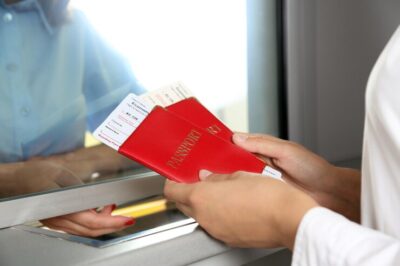Since September 1, 2013 China has introduced a family reunion or dependent visa to allow family members to join their relatives who are based here.

In this article, we will introduce the different types of China family visit visas, and the list of documents required.
We will also provide suggestions for writing a related invitation letter.
Types of dependent visas
The dependent visa is called the Q or S visa based on the nationality and the residency status of the inviter and can be divided into 4 sub-categories based on the intended length of stay:
| Visa Type | Intended Audience | Duration of stay |
| Q | Foreigners who are family members(*) of Chinese citizens or of foreigners with Chinese permanent residence and intend to come to China for family reunion | Q1: Exceeds 180 days Q2: Equal or less than 180 days |
| S | Foreigners who are immediate family members(*) of foreigners working or studying in China. | S1: Exceeds 180 days S2: Equal or less than 180 days |
Note: Please note that holders of a Q1 or S1 visa should apply for a residence permit within 30 days from the date of entry to China. Q2 and S2 visa holders are exempt.
According to the law, as only residence permit holders are allowed to invite their family members, Q2 and S2 visa holders are not allowed; however, we have heard cases where Q2 and S2 visa holders have been able to invite their family members, in practice. If you are a Q2 or S2 visa holder and plan to invite your family member, it is best to consult the Chinese embassy or consulate where he or she will apply to confirm if it is possible or not. S and Q visas are only issued outside of China.
Documents checklist per type of visa
Please make sure to check with the Chinese embassy in your home country for a specific list of documents as the requirements vary between embassies and consulates so the list provided here is a general checklist.
With regards to applications from other Chinese consulates or embassies, generally unless the person has a long term visa for that country or permanent residency status then it is not allowed, but we advise you to check with the specific consulate or embassy to ensure their individual requirements.
Q Visa (Q1 or Q2)
- An invitation letter issued by the Chinese inviter or the foreign inviter who holds a Chinese permanent residence permit
- Photocopy of Chinese ID of the inviting individual or foreign passport and permanent residence permit
- Original and photocopy of certification (marriage certificate, birth certificate, certification of kinship issued by Public Security Bureau or notarized certification of kinship) showing the relationship of family members between applicant and inviting individual
S Visa (S1 or S2)
- An invitation letter from the inviting foreigner who stays or resides in China for work or study
- A photocopy of the inviting individual’s passport and residence permit
- Original and photocopy of certification (marriage certificate, birth certificate, certification of kinship issued by Public Security Bureau or notarized certification of kinship) showing the relationship of family members between applicant and inviting individual
For those who are not familiar on how to write an invitation letter, you may refer to the template in the section below
Template of Invitation letter for China Visa
You can find the invitation letter template below:
Some people have written a letter to invite their family member to China, instead of using the template; however, should you choose to write a letter instead, we would suggest that you check with the Chinese embassy or consulate as to what information needs to be included. Using the template will be easier. Even if someone writes a letter, it does not really matter because the Chinese embassy or consulate is just looking for specific information from the letter.
The letter needs to be set up as a business letter and be addressed to the specific Chinese embassy or consulate that the applicant will apply for the visa. The following are the most common details that need to be included in the letter:
- Date the letter has been written
- Address the letter to the specific Chinese embassy or consulate
- Formal greetings (e.g. “Dear Sir or Madame”, etc)
- Invitee’s name as it appears on his or her passport, passport number, nationality, and date of birth
- Explain the reason he or she is are being invited
- Mention which document is enclosed to prove your relationship with him or her
- Inviter’s details and documents to prove his or her status in China (e.g. name as on his or her passport, passport number, nationality, date of birth, residence permit number, place of residence permit issuance, purpose of residence permit –or– Chinese identification card details)
- Closing of the letter (e.g. thank the reader for their time, etc)
- Typed name and signature


